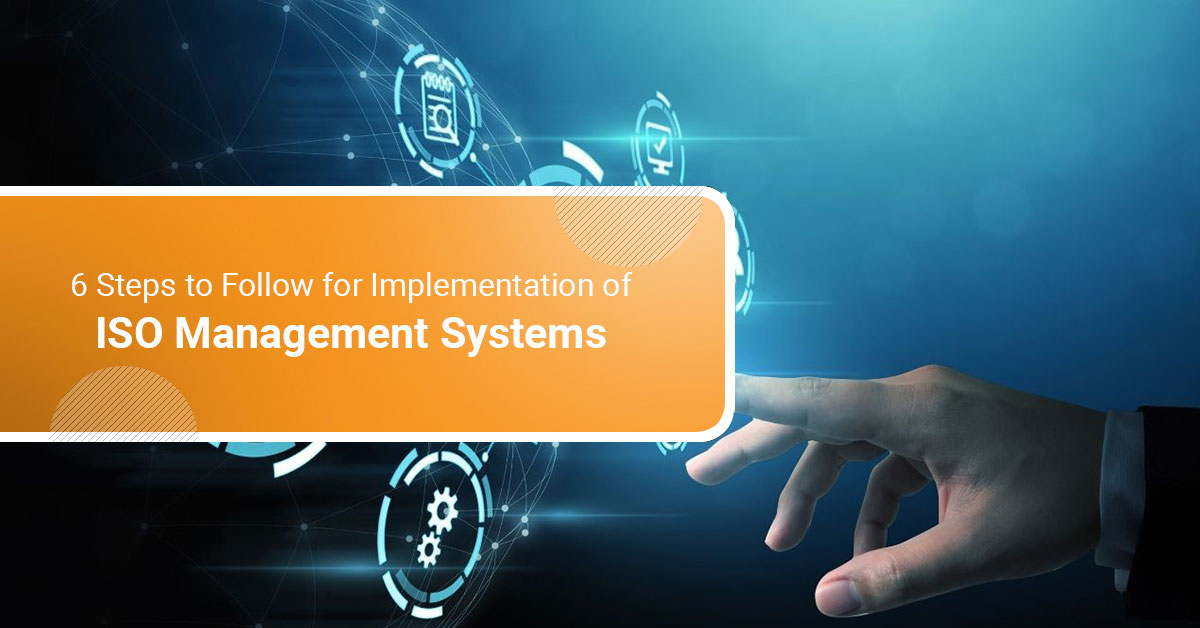
Organisations today are prioritising the ISO management systems because they help to streamline processes, achieve organisational goals faster, and meet the needs of stakeholders. Some of the most adopted ISO management systems are ISO 9001 quality management, ISO 27001 information security management, ISO 14001 environmental management, and ISO 45001 occupational health and safety management systems.
These management systems are the best way for an organisation to show its commitment to continually improve its performance while meeting all the mandatory regulatory and statutory requirements. Thus, with the implementation of one or more of these systems, you can observe strengthening of stakeholder relationships, reduction in operating costs, and incoming of business opportunities. To enable your organisation to get these benefits, you need to first know the ISO implementation steps i.e., how a concerned management system can be implemented/improved to meet compliance with an ISO standard. This blog will serve as a basic guide to help you understand the steps and undertake the process of implementing an ISO management system smoothly.
If you are going to implement an ISO standard, it is first essential that all your staff know about it and understand its requirements. They are going to work with the ISO management system once it is implemented and so it is necessary for them to gain adequate understanding. While you cannot expect them to learn everything about the standard on their own, you must provide them with a copy of the standard and educate them about its key concepts. You can also provide them with training with the support of an ISO consultancy firm if you feel the need.
To implement a big change in your organization, communication is most important. A new management system would bring change in processes and other systems of the organisation, thereby involving everyone. Thus, it is important to communicate with everyone and convey what management system is being implemented, why it is needed, how it would benefit the business, and how they need to work with its processes later on.
At this step, the actual implementation process starts. You need to appoint a special team who would make a realistic plan and determine the stages, resources required, and timeline of the implementation project. When you have selected the right staff for the project, it will make the process much smoother. The team should have adequate knowledge of the standard and ensure all its mandatory requirements are met in the implemented system. Also, the team must not be dissolved once the ISO management certification is complete. They should run periodic internal audits and monitor the performance of management system’s processes to ensure it is consistently effective as well as compliant.
The gap analysis, also known as a pre-audit, is needed for uncovering the nonconformities or partial nonconformities in your business processes against the chosen standard. This analysis would give a clear picture of your business’s present status in comparison to the standard. It shows which ISO requirements your business meets, partiality meets, or does not meet at all. Thus, you can map out a plan, figuring out what new actions should be taken and what changes should be initiated to close the gaps against the standard.
Every ISO management standard gives emphasis on the set of documents that organisations need to maintain for ensuring consistency in the management system as well as giving evidence of their compliance with regulatory requirements. The documentation requirements are laid out clearly by ISO and you need to follow them. However, you should understand the chief purposes of documentation and why the documents should be maintained properly for your ISO management system. The purposes, as mentioned by ISO, are communicating information about the management system, providing evidence of management processes, sharing knowledge, and preserving records of your organisation’s experiences.
Once you consider your organisation to be prepared with a plan, trained employees, resources, and documentation, you can begin with the implementation procedure. The first thing to do at this step is to consider the gaps that need to be covered to reach compliance. Whether it needs only a few adjustments in the processes or severe impactful changes, you must move forward methodically. In a case when extensive changes are required, set milestones and decide actions, resources, employees and time needed to achieve each of the milestones. Most organisations seek help from ISO consultants who can provide a step-by-step guide on implementation after evaluating the changes required to meet compliance. So, you can take expert help from dedicated consultants.
While these are the key ISO implementation steps that would make your business compliant, your journey does not end here. You need to continuously check and modify the management system to make sure it conforms to the latest requirements of the ISO standard. Every ISO standard undergoes revisions after a certain time gap. So, you need to ensure the implemented system adheres to the changes or additional requirements of the revised standard. Even if there are no updates made in the standard recently, you should keep checking the management system at periodic intervals. It is required to find any weaknesses, errors and setbacks in the system so that you can undertake corrective actions to address them.
The benefits of having an ISO management system are extensive in a business. From internal benefits like improved efficiency and reduction of operating costs to rewarding external advantages like increased stakeholder trust and international opportunities, there are many ways an ISO management system can prove to be a fruitful investment for you.
If you like to get more information or want to make queries on how to prepare your business for an ISO standard implementation, experts at Compliancehelp are there to answer you or assist you. Get in touch with our team today!

Get connected with us on social networks!